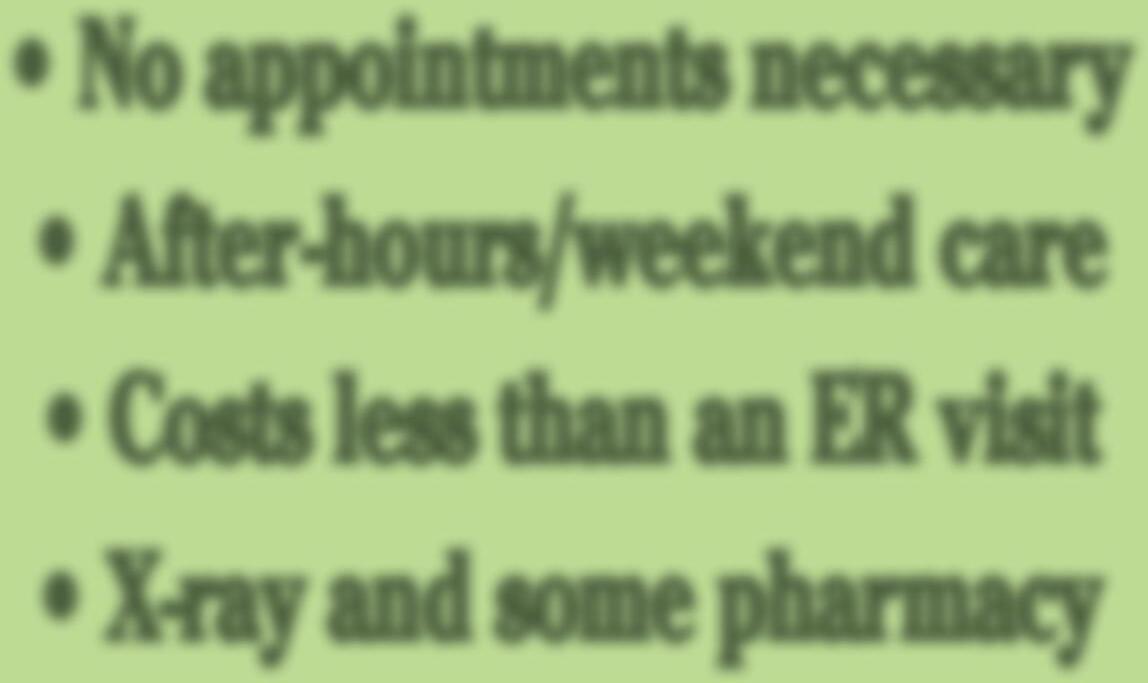Estes Park Health
Celebrates 50 Years

Rocky Mountain New Timed Entry System
Top 5 Must-Do Adventures

Estes Park Health
Celebrates 50 Years

Rocky Mountain New Timed Entry System
Top 5 Must-Do Adventures










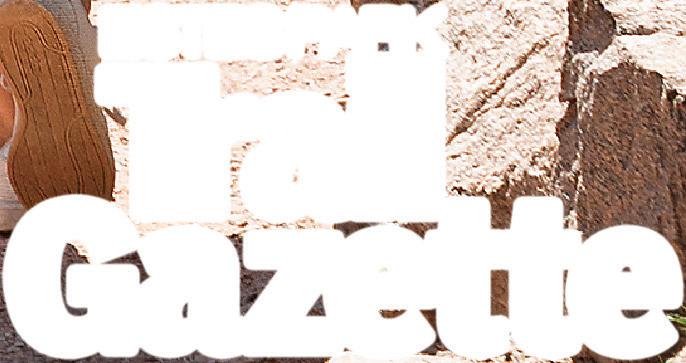

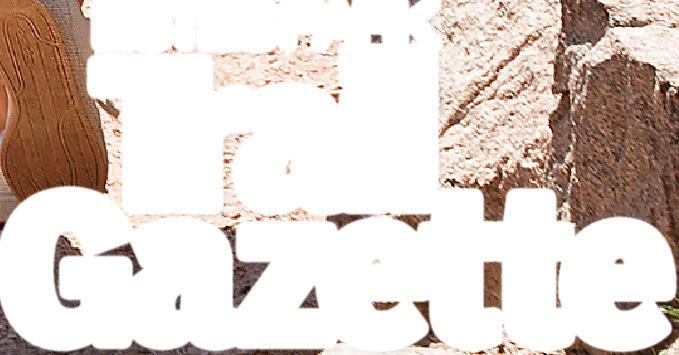
























































•Allergy &Asthma






•Cardiology












•Cardio/Thoracic Surgeon













•CPAPFittings




•Chemotherapy and Infusion Clinic














•Dermatology










•Ear,Nose &Throat









•Family Medicine









•Gastroenterology








•General Surgery








•Internal Medicine






•Neurology







•Obstetrics & Gynecology















•Oncology









•Ophthalmology










•Orthopedic Surgery





•Pacemaker Clinic








•Pain Management






•Pediatrics





•Podiatry







•Pulmonology






•Sleep Disorders




•Urology




























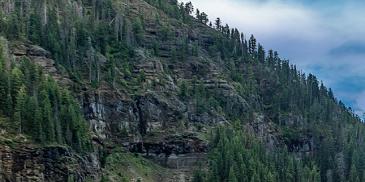
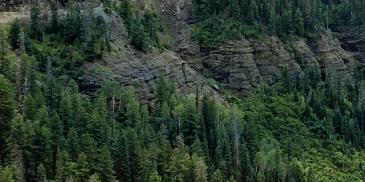

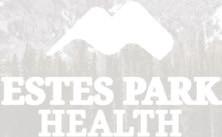



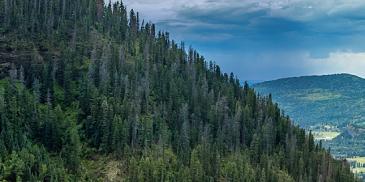








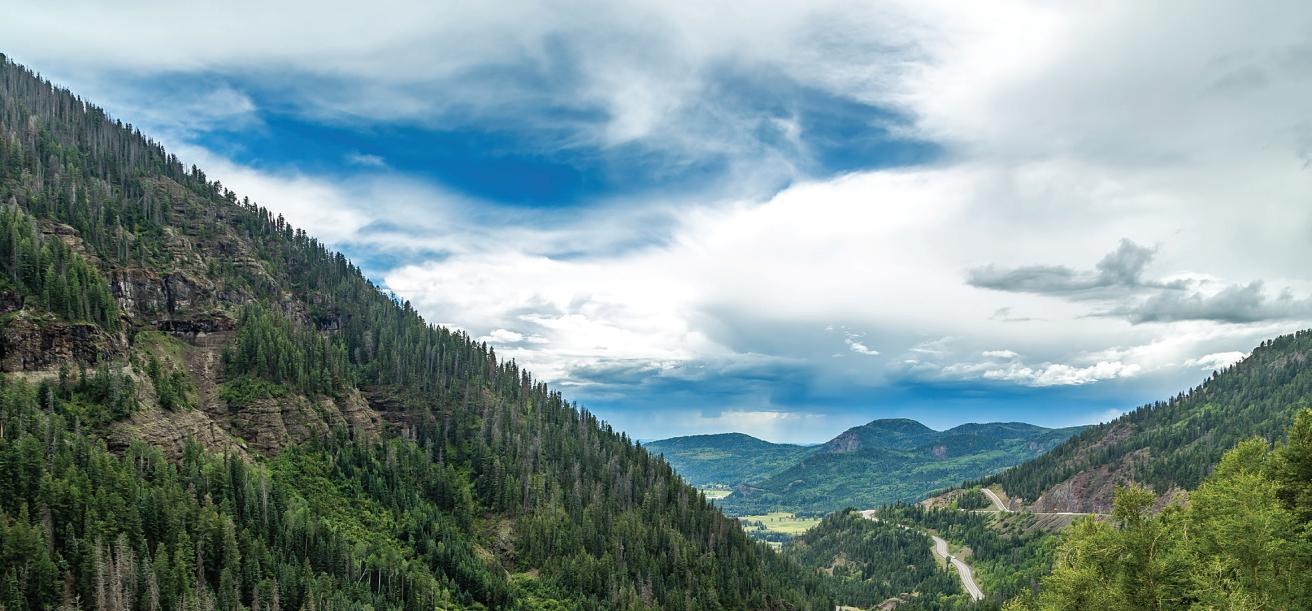

How audiology and fitness tech are converging
Cory Workman,Au.D., Community Hearing Center
In the last year I entered the world of fitness tracking with a wrist worn bit to help me be fit. (See what I did there?) I started to log steps, track sleep, set goals for activity and try to meet them, and became attached to my “numbers”. My wife also joined me in this adventure around this time and has done much of the same. It has made me think more about my health and what I am doing to stay on top of my game. How did I sleep last night? My wrist lets me know each morning with a report. How active was I yesterday? Again, my wrist has the report. You may ask, what does this have to do with the ear? Here’s what I think.
At the national American Academy of Audiology convention in Nashville, Tennessee in ApriI 2017 heard a speaker mention that 2017 was the “Year of the Ear”. He spoke about innovations in hearing technology and the possibility of combining hearing and fitness technology in the ear. I was fascinated and there are already several non-hearing aid products on the market which allow a user to enhance their hearing in an environment while listening to music and tracking their fitness statistics. So, as the speaker spoke about a single device worn in the ear that could track fitness, aid hearing, allow the user to listen to phone calls and music, connect with other devices to enhance hearing (such as a Bluetooth enabled
TV), and many more I began to wonder about the technology already on the market. I wondered how much people know about these solutions and how they are being used.
Today, in 2025, you can go to an audiologist and purchase a hearing aid which is bluetooth enabled and can communicate with your smartphone allowing you to listen to music and hear phone calls. You can use your smartphone as a remote control to tailor your listening experience in real time right as you need it. There are hearing aids that can use services through your smartphone to trigger other devices in your home. For example, when the hearing aid is placed into a TV listening program, your TV and entertainment system is turned on automatically When you are finished watching TV and change back to a normal listening program, the entertainment system is turned off. These changes can be triggered through the smartphone or even through a wrist worn device such as an Apple Watch. The experience with the hearing aids can be more controlled by you and when you return to the audiologist the changes and adjustments you have made are read back into a computer and adjustments can be made to make your experience even better I believe this is only the start of great things to come.
In the future hearing aids and ear level technology will continue to move forward and become more and more integrated with our lives and yet be seamless. When technology seems almost magical in it’s ability and it continues to improve we know we are living in an amazing time. The ear is a wonderful and amazing organ system and
the technology available today and in the future to improve our hearing and ears continues to amaze me. The simplest act of listening to a loved one and being able to follow a conversation with friends is just the start for hearing technology. Connecting people to their world in their way is the future and this will not be limited to hearing, it will include fitness, entertainment, transportation, real time information, and even help in an emergency situation. Imagine all of this in the ear with a single device. The future of technology for and in the ear is moving quickly and I am excited for it! If you or someone you care about is struggling with hearing or is interested in these new ear and hearing technologies, contact an

audiologist. I personally am always excited to share these innovations with patients and the public alike. Hearing and good health go handin-hand and as technology continues to become better we will see the ear become the prime real estate of communication, health, and better living.
Cory Workman,Au.D
Board Certified Audiologist Community Hearing Center (970) 586-5255

By Jacqui Wesley Utilities Project Manager and Reuben Bergsten, Utilities Director
The start of the year is a great time to reflect on where we have been and where the Town of Estes Park’s Water Division is going as a water provider Our thanks to the late Dale Hill, who was Estes Park’s Town Administrator from 1969 to 1988. Mr. Hill researched and documented much of this important history.
The Estes Park Water Division has come a long way from its start back in January 1906 by F O. Stanley Back then, the water system
consisted of about 3 miles of 2-inch water pipe serving the Stanley Hotel and Stanley’s residence west of the hotel on Wonderview Avenue/U.S. 34.
The water was provided to the hotel, and they used the water pressure to operate the hotel’s elevator.
Several citizens of the community decided the community needed a domestic water supply and, subsequently, the Estes Park Water Company was organized on October 7, 1908. The organizers of the water company were F.O. Stanley, J. Y. Munson, Donald MacGregor, H. E. James and C.H. Bond. The water company was capitalized for $20,000. The capital stock














was later authorized up to an amount totaling $100,000 and, of this amount, $60,000 was eventually sold.
When the Estes Park Water Company was organized in 1908, it installed a 2 ½-inch water service line to town that paralleled the existing 2-inch water line serving the Stanley residence and the Stanley Hotel. In 1923, a water line from Black Canyon to the town froze, and the community was without water for almost the entire winter. This prompted the water company to replace the old line with a new 8-inch wood main, which was installed by about 40 men hand-digging the entire length of the line.
In 1922, some of the officers of the Estes Park Water Company unsuccessfully urged the Town of Estes Park to purchase the water company In the late 1920s, Charles Salit tried to purchase controlling interest in the Estes Park Water Company, but key community members thought this purchase would result in exorbitant water rates. After once again encouraging the Town to purchase the water company, financial arrangements with the First National Bank of Denver were made for these key community members to borrow enough money to purchase the controlling interest of the Estes Park Water Company. Shortly after this, the Town of Estes Park held an election, and on June 10, 1929, purchased the Estes Park Water Company for $73,260.
What a long way we have come from those days – we have grown to provide water service to community members in Town and in areas adjacent to the Town
limits. Our current water system consists of multiple water sources, two water treatment plants that meet or exceed Federal and State water treatment standards, over 3.5 million gallons of water storage, and over 100 miles of water distribution pipe. We don’t just provide drinking water –we provide the water that is critical for fire protection, with over 800 fire hydrants (and counting) and a bulk water fill station. Our highly trained water team consists of 14 licensed professionals in water treatment, water quality, and distribution.
The Town’s Water Division has several exciting projects planned for 2025 and beyond, including major improvements to our water treatment processes, ensuring they continue to provide high-quality water. We are focused on improving our system’s reliability and resilience by optimizing our existing raw water rights, enhancing treatment through treatment plant infrastructure upgrades, and replacing old pipes while adding more interconnections within the water system so we can eliminate areas that are “dead ends,” dependent on old water lines.
Our water team recognizes that trust in the water system is critical to maintaining a thriving community. Over the next few years, we will be making changes to operations, infrastructure, and organization to benefit our customers and continue to earn your trust and confidence in the high-value water we provide.
Learn more about the Town of Estes Park Water Division at estes.org/water. For more information, please call us at (970)577-3619.
By Wendy Rigby Estes Park Health
Estes Park High School graduate
Avery Tulley is the latest addition to the staff at EPH Outpatient Rehabilitation Services. Tulley is a certified Physical Therapy Assistant (PTA) who started working at EPH on Dec. 30, 2024.
“I moved to Estes Park as a teenager,” Tulley said. “I graduated from Estes Park High School. I went to college at Colorado State University in Fort Collins where I earned my bachelor’s degree in neuroscience. I moved to Florida to get my master’s degree in medical sciences at the University of South Florida. I earned my physical therapy assistant certification from Rasmussen University.”
Tulley is looking forward to working with pediatric patients in a new area at EPH Rehab set aside for children. (Wendy Rigby/Estes Park Health)
Tulley got interested in physical therapy when she volunteered at a hippotherapy program. Hippotherapy uses horses to incorporate PT for children.
“I really loved that,” she noted. “I decided that was the avenue I wanted to take. I wanted to go into physical therapy.”
A Physical Therapy Assistant puts into practice the treatment plans that a Physical Therapist outlines for a patient. A PTA comes up with the exercises and treats the patient based on the plan.
Working as a PTA is a hands-on job.
“Each patient needs

different therapies,” Tulley explained. “We do a lot of manual therapies like massaging and direct mobilizations. We do exercise prescription where we take what level they are now and get them back to their prior level of function as best we can. For shoulder therapy, patients may be guided to use pulleys, do strengthening exercises and stretching. Each body part has a lot of different exercises that will help with recovery and rehabilitation to generate balance and stability and strength.”
Tulley emphasized that she is grateful for the wonderful gym at the EPH Rehab Services at 420 Steamer Drive. The facility is filled with all the tools for rehabilitation: treadmills, stationary bicycles, parallel bars, benches, stairs, bands, weights, and therapy balls.
For Tulley, every day on the job is a unique experience.
“Every day, every hour is different,” she commented. “I really like this job because you get to know the patients. You are working with the same people multiple times a week.”
Her family and her husband’s family live in Estes Park. Now, she does, too.
“We were missing them and wanted to move back,” she said.
Tulley is looking forward to working with pediatric patients in a new area at EPH Rehab set aside for children.
“We all saw a need in the community for pediatric physical therapy,” she remarked. “A lot of families drive down to the valley several times a week for physical therapy. Now they have an option up here. Kate
Jamis is EPH’s pediatric Physical Therapist. I am looking forward to working alongside her in treating children, too. We just got our toys last week. That was very exciting. There is a mirror at child level and a low bar for gait training.”
When she is not working, Tulley enjoys running. She has horses in Fort Collins and rides on the weekends. She spends a lot of time with family now that they all live in the same town.
She has enjoyed her new position.
“I like it a lot,” she noted. “Everyone’s really nice and my co-workers are super helpful. All the patients have been very welcoming. I’m enjoying it. Plus, you can’t beat this view I don’t think you could find any other rehab facility with this kind of view.”
By Dawn Wilson Estes Park Health
On Tuesday, April 15, 2025, Estes Park Health, the community hospital for Estes Valley, will celebrate its golden anniversary.
These 50 years have marked a steady increase in services, staff, advanced medical equipment and expanded buildings.
It is this type of growth over the past five decades that allows an emergency department team to receive a patient transported by EPH paramedics, a caring nurse to administer chemotherapy drugs to help patients avoid a long drive to the valley, or a parent to have the convenience to bring their child to a local family doctor.
These types of scenarios –providing skilled healthcare from emergency situations to routine visits – at a local hospital makes living at an elevation of 7,522 feet possible for the nearly 6,000 residents of the small town of Estes Park. This type of care also efficiently and effectively serves the more than 4.1 million visitors exploring nearby Rocky Mountain National Park.
But that wasn’t the case prior to 1975, when the only medical services in town were provided by two doctor’s offices – Reid Hospital and Mall Hospital. Each described as modified clinics, with basic and rudimentary equipment for x-rays, surgery, overnight care and family healthcare. At the time, emergency care would require stabilization at one of these offices or a one-hour ride to the nearest hospital.
In 1975, the population
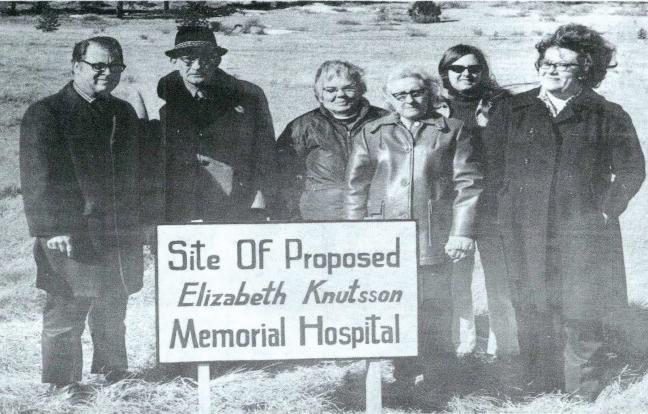
of Colorado experienced some of its largest growth in history, expanding by more than 60% from the 1950 to the 1970 census.
Estes Park witnessed some of that growth as well, with new residents moving to the 7,522-foot valley and more than 2.8 million people entering Rocky Mountain National Park in 1975, a 75% increase from just ten years earlier
mentioned.
These 50 years have marked a steady increase in services, staff, advanced medical equipment and expanded buildings.
Those two small doctor offices – a thriving but limited part of the Estes Park community – could no longer continue to handle the growing needs of the region’s residents and visitors.
In 1967, the idea for a larger and more advanced hospital was first publicly
One year later, the Park Hospital District, a special tax district of Larimer County, was formed, but funds would have to be raised to make the dream of a community hospital a reality In 1969, that funding took a large leap when Roger Knutsson, a long-time summer resident of Estes Park, donated more than $100,000 in the form of Eastman Kodak common stock to the Park Hospital District as a memorial for his late wife, Elizabeth. That donation amounted to about one-third of the total estimated cost to build the hospital.
To honor Knutsson’s
generous gift, the hospital board named the hospital the Elizabeth Knutsson Memorial Hospital.
Donations continued to come in from many members of the community, including a $900 donation from Mrs. Claire T. Hertz in 1969, funds resulting from the establishment of the Elizabeth Guild Auxiliary in 1972, and a donation from Scott Thompson, a Longs Peak Boy Scout member, in 1974.
On Saturday, Nov. 24, 1973, supporters of the project moved the first shovel of dirt towards the construction of the new hospital.
After less than two years of construction, the Elizabeth Knutsson Memorial Hospital opened on April 15, 1975.
During the dedication ceremony, Knutsson said, “This hospital is your hospital. It is here to improve the health of you who live here and the many visitors

who pass through during the summer It is here to save lives, possibly of some of us.”
Since that day 50 years ago, the hospital has been renamed twice, to Estes Park Medical Center in 1986 and Estes Park Health in 2018. The hospital has also seen growth in high-quality care with the addition of 24-hour ambulance service, an emergency department, a helipad, the radiology
department, expanded surgical services, an outpatient clinic, a digital imaging suite, an urgent care center, and much more.
The hospital has also increased from its original plans of about 15 beds into a 23-bed critical access acute care facility, serving more than 18,000 patients for outpatient and inpatient services.
The next 50 years of medical care in Estes Valley look promising, with advanced technology and
healthcare services thanks to a forthcoming partnership with UCHealth.
Estes Park Health is comprised of skilled, compassionate caregivers. We are a critical resource in our mountain community, providing quality care for our friends, neighbors and visitors, from pediatrics to geriatrics. With a persistent dedication to patient-focused care, we continue to score high on key measures in patient satisfaction surveys. Estes Park Health was founded in 1975 as the Elizabeth Knutsson Memorial Hospital per a tax subsidy voted on by the citizens of Estes Park. Today, more 18,000 patients— residents and visitors alike— see our healthcare teams for both outpatient and inpatient services.


Jamie Mieras, DPM, started seeing patients in early February
By Wendy Rigby Estes Park Health
Afoot injury she sustained while training for the Boston Marathon changed the trajectory of Dr Jamie Mieras’ career She did not start out to become a healer
The Boulder native went to school at The University of Colorado for a degree in Biology with an emphasis on plant studies. She moved to Seattle and worked as an IT administrator for a time. That’s when she got into running, one of her big passions.
“When I found a podiatrist to help me, I was just in awe of what he could do,” Dr. Mieras remembered. “I was so impressed. I said, ‘Is this what you do all day?’ I decided right then and there that this was a good career path for me.”
Dr. Mieras went to DO school at Midwestern University in Arizona. She did clinical internship in Phoenix and San Francisco before heading to Scripps San Diego for residency She worked in Sacramento where she treated a lot of foot and ankle trauma. Then she came back to Colorado and practiced for a year in Boulder before practicing rural health medicine in California. She has the only podiatrist in a 200-mile radius.
“Accessibility to this specialty is important,” Dr. Mieras emphasized. “Foot
and ankle problems make it hard to drive and difficult to walk around and get to places.”
Following that experience, Dr Mieras worked in Portland at one of the busiest hospital systems in the city She saw a lot of different pathologies and performed many surgeries.
After growing up in Boulder and being in Colorado for a good portion of her life, Dr Mieras says Estes Park feels like her second home.
“My grandparents moved to Boulder because they loved Estes, but it was just a little bit too high for them,” she noted. “As a young child, I was brought to Estes quite a bit to explore the trails and enjoy the town. It just feels like home. For me to be able to bring more than a decade of experience to home is nice and important to me.”
When asked what she thinks she will like best about working at Estes Park Health, Dr Mieras answered, “the people.”
“The people I interact with here are very genuine and authentic,” she said. “Everyone seems so nice and involved. We’re all a part of each other’s lives. I’m very happy to become a piece of that and give back in terms of being able to help people heal. This is extremely rewarding in a small community where we all know each other, and we are integrated. I am so excited to be here. It’s a wonderful place. I started seeing patients in early February.”
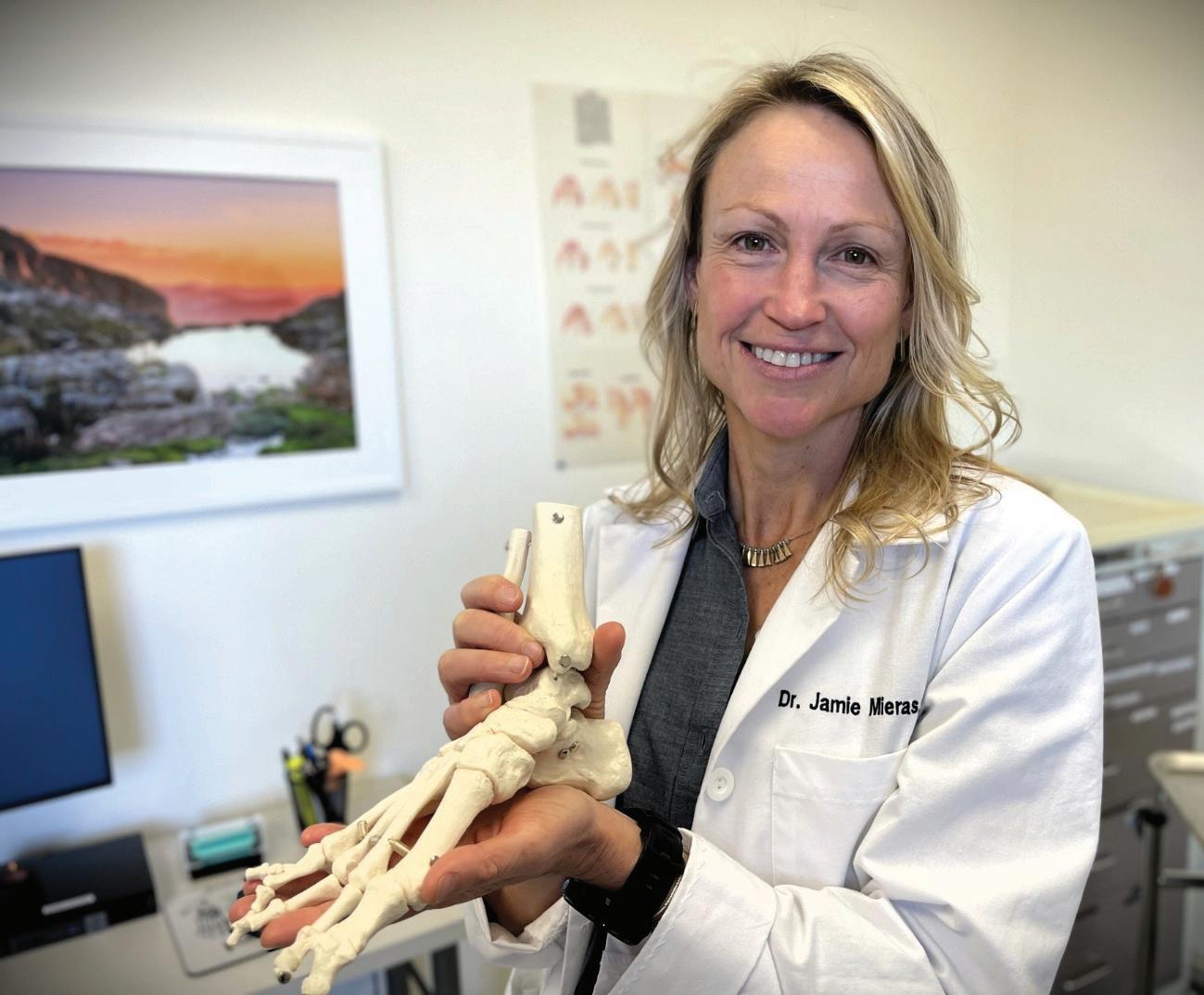
Dr Mieras believes that a big part of being a doctor is getting patients to understand what is going on. If you understand as a patient, she said, you are most likely to do the right things for it or to understand the healing process.
The most common complaints she will be seeing as a podiatrist at EPH include plantar fasciitis, pain in the toes, foot, and ankle, sprains, fractures, ligament repairs, reconstructions, bunions, hammer toe issues, corns, and callouses.
“We see people with diabetes who need a little bit of extra care for their feet and extra monitoring,” Dr. Mieras pointed out. “The high blood sugars can make their immune system less able to respond to problems to being with. We see a decrease in nerve sensation. The ends of the small nerves at the ends of the toes up to the bottom of the foot start to go numb. Then the body is not alerted when something is happening in that area. Things can become worse quickly. It’s very important that we monitor diabetic feet so that the patient is on the path to health. It’s one of
the most rewarding things to see a diabetic foot wound heal and for that person to become more mobile.”
Dr. Mieras will also be performing surgeries at EPH. She is board certified in both foot and rear foot reconstruction and ankle surgery and can take care of everything from bunions to ligaments.
Dr.Mierason herofftime
Dr Mieras has some interesting hobbies, from running long distances to flying airplanes.
“I do like adventure,” she commented. “I run ultramarathons, usually on the trail. I’ve run one 100-miler and several 50-milers. I am a pilot of small planes. It’s very fun. I serve as a flight instructor on the weekends. I’ll go down to an airport in Broomfield and help my students learn how to fly.”
To listen to a podcast featuring Dr Mieras, go to blubrry.com/ 1471883/142026762/ mountaintop-medicinefrom-estes-park-healthnew-podiatrist-helps-ephpatients-get-back-ontheir-feet.



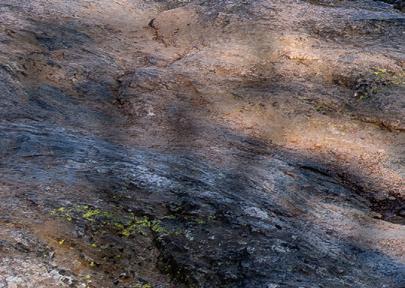


Nestled at the doorstep of the Rockies, Estes Park serves as the eastern gateway to Rocky Mountain National Park (RMNP), one of America’s most awe-inspiring natural treasures. With its alpine lakes, towering peaks, and abundant wildlife, RMNP offers a wealth of experiences for visitors. Here are the top five activities to enjoy during your visit:
Spanning 48 miles and reaching elevations over 12,000 feet, Trail Ridge Road is the highest continuous paved highway in North America. This scenic drive offers panoramic views of alpine tundra, distant peaks,

and valleys. Highlights include the Alpine Visitor Center and Forest Canyon Overlook. Note that the road is typically open from late May through mid-October, weather permitting.
For a quintessential RMNP hiking experience, embark on the 3.6-mile round-trip trail to Dream and Emerald Lakes. Starting at the Bear Lake trailhead, this moderate hike leads you past Nymph Lake and offers stunning views of Hallett Peak and Flattop Mountain. It’s a favorite among visitors for its accessibility and breathtaking scenery
Bear Lake is a picturesque,



easily accessible alpine lake surrounded by spruce and fir trees. The 0.6-mile loop trail around the lake is flat and suitable for all ages, making it perfect for families or those seeking a leisurely stroll. The lake offers stunning reflections of the surrounding peaks, especially in the early morning light.
Moraine Park is a broad, glacially carved valley renowned for its wildlife viewing opportunities. Elk, mule deer, and other animals are frequently spotted here, particularly during the fall rutting season when elk bugling fills the air. Numerous trails, including the Cub Lake Trail, begin in this area, offering varied hiking options.
A short 1.7-mile round-trip hike from the Glacier Gorge trailhead leads to Alberta Falls, a 30-foot waterfall cascading through a scenic gorge. The trail is moderately easy and passes through aspen groves and pine forests, making it a popular choice for visitors seeking a rewarding yet accessible hike.
Whether you’re driving along high-altitude roads, hiking to serene alpine lakes, or observing wildlife in lush meadows, Rocky Mountain National Park offers unforgettable experiences for every visitor. Be sure to check trail conditions and weather forecasts before your trip, and always practice Leave No Trace principles to preserve the park’s natural beauty
2024.
By Daniel Webb for Estes Park Trail-Gazette
Planning a trip to Rocky Mountain National Park will look a bit different when the park implements its 2025 timed-entry reservation system on May 23.
The reservation system focuses on protecting resources as it provides day use visitor access and creates opportunities for high-quality visitor experiences, Public Affairs Officer Kyle Patterson wrote in a release.
“The system, established through the Day Use Visitor Access Plan finalized in May 2024, manages day use visitor access in a way that protects the park’s resources, maintains positive visitor experiences, promotes safety, and supports the park’s ability to maintain daily operations,” Patterson said.
The system will allow two types of reservations, similar to the way it operated in

intervals.
One permit reservation period will be from 5 a.m. to 6 p.m. for the Bear Lake Road Corridor This permit includes access to the entire corridor as well to the rest of the park. The other permit will be for the “rest of the park,” but will exclude the Bear Lake Road corridor. This “rest of park” reservation period will be from 9 a.m. to 2 p.m
Permits issued using the new reservation system will allow park visitors to enter the park within two-hour windows of availability, with no departure time set, and will apply to all areas of the park. A $2 recreation. gov processing fee will be associated with booking a reservation.
The Bear Lake Road Corridor timed entry reservation system will end on Oct. 20, but the rest of the park reservation system will end Oct. 14.
Entry reservations will be available through www recreation.gov at regular
Beginning at 8 a.m. on May 1, reservations will be available from May 24 through June 30. The next release will occur on June 1, for the month of July and any remaining days that have not been booked for June.
On July 1, reservations will be available for the month of August and any remaining days that have not been booked for July On Aug. 1, reservations will be available for the month of September and any remaining days in August that have not been booked.
On Sept. 1, reservations will be available for October and any remaining days in September that have not been booked.
“When planning to visit Rocky Mountain National Park, take time to consider your preparedness, skills, fitness and experience,” Patterson said. “No matter how you choose to recreate, be prepared to turn back when conditions change or if you are being pushed to your limits. Weather and conditions can change quickly in the Rockies. Before starting any trip, take time to explore the park’s website and plan ahead for a safer
and more enjoyable visit.”
The park experienced a 44% increase in visitation from 2012 to 2019 and jumped to 4.3 million visits in 2022. Patterson said that even with a pilot vehicle reservation timed entry system in place, the park received some of the highest visitation in its history.
The concept of the system is nothing new The park piloted several day-use visitor management strategies to address crowding, congestion, and impacts on park resources between 2016 and 2023. According to Patterson, the pilots proved that this strategy is effective at easing congestion impacts and improved the overall visitor experience at the park.
During the summer of 2021 and the winter of 2022-2023, the park got the public involved, asking for participation in envisioning the future of day use visitor access.
Those looking for further information about the park can visit nps.gov/romo, follow the park on social media @RockyNPS or call the park Information Office at (970) 586-1206.
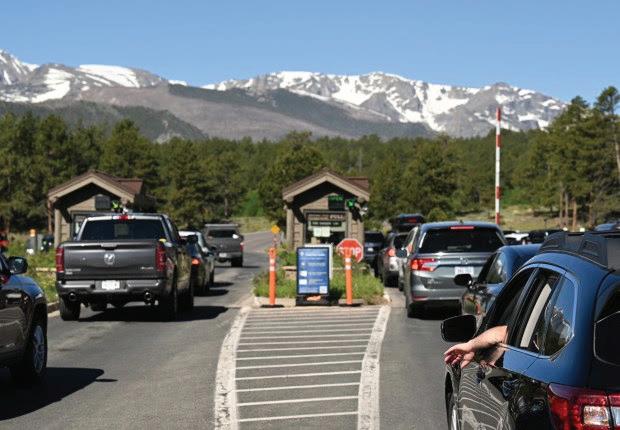
By Jody Street Estes Park Trail-Gazette
Crossing the threshold that separates the real world from the wilderness wonderland of Rocky Mountain National Park is getting easier than ever thanks to the park’s transponder devices.
The transponders themselves, credit card-sized devices that adventureseeking park-goers may attach to the upper righthand passenger side on the inside of a vehicle’s
windshield. These voluntary amenities offer annual and lifetime pass holders (RMNP Annual Pass, America the Beautiful Annual, Senior, Access, Military, 4th Grade, and Volunteer passholders) permission to use the park’s Transponder Lane when entering Rocky Mountain National Park via the Beaver Meadows and Fall River Entrances.
New transponder devices and renewals for transponders purchased in 2024 will be available at Beaver Meadows Visitor Center on Sundays beginning on April 13 during the hours
of 9 a.m. to noon and 1 p.m. to 4 p.m.
What’s more, a new transponder lane will be available at the Grand Lake Entrance. The 2020 East Troublesome Fire destroyed the previous transponder lane. Passholders with a transponder will be granted the option to use the park’s Transponder Lane when entering the Beaver Meadows or Fall River Entrance to Rocky Mountain National Park, so long as the transponder lanes are open at the time of entry
From late May through mid-October, while RMNP’s
timed entry system is in effect, the Transponder Lane will be closed between the hours of 9 a.m. and 2 p.m. Visitors with transponders will still, however, be welcome to use the Transponder Lane before 9 a.m. or after 2 p.m. Transponders cost $15 and one passholder can purchase only one transponder In order to receive a transponder, purchasers must have a valid park entrance pass (such as an RMNP Annual pass, America the Beautiful Interagency Annual, Senior, Access, Military, Veterans, Volunteer,
or 4th Grade Pass).
Transponders are valid for up to one year and can be renewed each year for $5.
In the event that a transponder becomes detached from your vehicle’s windshield, a new one must be purchased as the detached transponder will no longer work.
These helpful park-entry tools are non-transferrable, non-removable, and nonrefundable. They also cannot be moved once affixed to your windshield. In the event that a transponder is moved, it will no longer work and a new devise will have to be purchased.
When using the transponder lane, visitors should remember to also bring along their park pass, as visitors must have both the valid transponder and the corresponding valid park pass with them when driving into Rocky Mountain National Park.
Those who had a valid

transponder in 2024 and are looking to renew will need two things upon arrival at Beaver Meadows Visitor Center.
First, renewers need a valid park entrance pass (annual or lifetime park pass). To be
clear, this must be the pass itself. A photo of a pass or the pass number will not be accepted.
Second, renewers will need a photo of the transponder that shows the 10-digit transponder number on the back side of the device. The device must be affixed to
the windshield in the photo. Photos make it easier for park staff to pull up your account.
While in the past, visitors may have been able to use a park pass for entry, the new national passes are not compatible with the park’s fast pass gate system technology and the fast pass gate has not been operational for the last few years. The National Park Service modified the format of its annual and lifetime passes in 2019.
Rocky Mountain National Park is one of the only national parks in America to provide a pass lane for visitor use.
Additionally, park visitors who purchase one-day and seven-day entrance passes, commercial use authorization holders and their clients, and Special Use Permit holders, including Commuter Permit holders, are not eligible for RMNP’s transponders.
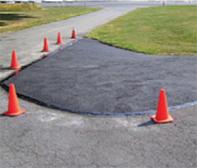
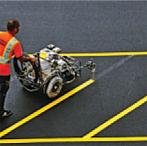













By Daniel Webb for Estes Park Trail-Gazette
Larimer County parks and open spaces received four out of five stars for 2024 public satisfaction.

The four-star rating signifies that visitors were "satisfied" with their park experience via the Larimer County Department of Natural Resources “Rate Your Day” survey The visitor satisfaction survey was conducted from June through October 2024.

safe and welcome.
Just over 80% of reviews came from Colorado residents, but 36 total states were represented in the surveys collected. Of respondents from Colorado, 14% were Larimer County residents.
Surveys were facilitated through a QR code on posters, flyers, social media, and signage at trailheads, campgrounds and visitor centers.


The survey recorded 1,112 responses to gather insight directly from visitors at all parks and open spaces managed by the Larimer County Department of Natural Resources.
With 52% of ratings giving park experience five stars, over half of the survey submitted considered their experience "very satisfactory." Almost 80% of responses were either four or five stars. 87% of total respondents reported feeling
Almost three quarters of feedback was given about visits to a lake or reservoir, including 32% of all feedback regarding Carter Lake and Pinewood Lake near Drake and Estes Park.
Of the responses regarding open spaces, nearly all the feedback was given about Hermit Park Open Space near Estes Park. Those responses accounted for 23% of all feedback, open space or otherwise.
The first two phases of feedback are now complete, having been conducted in 2023 and 2024. A third phase will be conducted from June through October 2025.

By Daniel Webb for Estes Park Trail-Gazette
Pack your bags!
Backpacking permits are now up for grabs for trips through Rocky Mountain National Park.
Advanced online reservations for all 2025 summer season Wilderness Overnight Backpacking permits within the Rocky Mountain National Park went on sale via Recreation.gov Mar 1.
To pick up a few important tips and begin planning for a summer wilderness overnight backpacking trip, visit the park’s Wilderness Overnight Backpacking webpage. Those interested in taking a trip are encouraged to familiarize themselves with route maps,
public, according to a news release from the Initiative.
The Rocky Mountain Restoration Initiative is looking for new subcommittee members dedicated to increasing awareness and support for all of the resilient forests, wildlife habitats and communities in the Rocky Mountains.
Throughout the five-year history of the RMRI’s Social License and Communications Subcommittee, voices and expertise have played a crucial role in building trust and fostering open dialogue with communities, stakeholders, and the

wilderness campsite locations and the park’s wilderness overnight backpacking regulations.
Booking is available for small groups of one to seven people and large groups of eight to 12 people by clicking the “Check Availability” feature on the Wilderness Permits page for Rocky Mountain National Park on Recreation.gov. Next, select the starting area that corresponds to the site at which you hope to camp, fill in a desired start date, and enter the total number of members in your group.
Additionally, the park offers the reminder that all scented items must be secured inside a self-provided, hardsided, lockable, commercially manufactured carry-in/out bear-resistant food storage canister, and campfires are strictly prohibited.
“By joining this team, you’ll help shape impactful strategies for communicating the importance of RMRI’s work,” the release reads.
“If you’re passionate about creating meaningful connections and amplifying key messages, we’d love to have you on board!”
The Initiative and its subcommittees are designed to increase forest resilience, recreation opportunities and water resources across all lands in the Rocky Mountains.
Visit tinyurl.com/ 4suund9r to submit an interest form.




By Don Smith Estes Valley Land Trust Board Member
Unfortunately, many positive aspects of life are ephemeral, here one minute and gone the next. By contrast, the land in the Estes Valley is enduring and permanent. This land provides continuing spiritual sustenance and inspiration.
For thousands of years, humans have migrated to or lived here, an area that one travel writer has called “magical.” Enos Mills, the “father” of Rocky Mountain National Park, recounted in 1917 the impact of this magical valley: “From the wilderness the [visitor] returns a man, almost a superman.” However, the land cannot protect itself. That is the work for humans coming together in groups in pursuit of this imperative cause. One of these groups is the community-based Estes Valley Land Trust (EVLT).
As a former EVLT board president and a member for more than a decade, I am delighted to report that recently the EVLT has earned the prestigious “Land Trust Accredited Seal” awarded by the Land Trust Accreditation Commission, an independent program of the national Land Trust Alliance. The Commission, established in 2006, operates an innovative program to build and recognize strong land trusts, foster public confidence in

land conservation efforts, and help ensure the longterm protection of land. Accreditation is awarded to a select group of land trusts that meet the highest
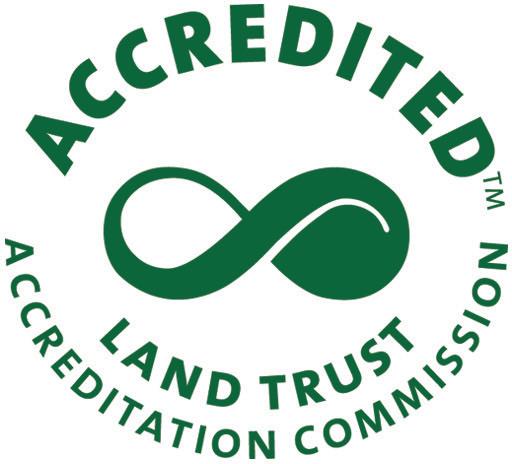
national standards for excellence and conservation performance. In 2024, the EVLT, for the fourth consecutive cycle, successfully completed a rigorous review process that resulted in the conferral an additional seven-year accreditation. The award extended the EVLT’s accreditation status, which initially began in 2008. Of the 16 accredited Colorado land trusts, the EVLT resides in the top quartile in length of accreditation status.
Jeffrey Boring, EVLT Executive Director, said the accreditation was important for several reasons. “The Land Trust Accreditation Commission inspires excellence, promotes public trust, and ensures permanence in the conservation of open lands by recognizing organizations that meet rigorous quality standards and strive for continuous improvement,” he said. “Every day our organization works to

protect natural spaces for the people of the Estes Valley, one of the truly magnificent areas in our country,” Boring said.
The Accreditation Seal, considered a “mark of distinction” in the national land trust community, confirms that the EVLT has demonstrated excellence in four organizational categories: (1) sound finances; (2) lasting stewardship; (3) responsible governance; and (4) well-managed land transactions.
First established in 1987, the EVLT now protects more than 10,000 acres in the Estes Valley During this nearly 40-year period, the EVLT has earned a solid reputation for collaboration with local landowners, Larimer County and Estes Park municipal governments, Great Outdoors Colorado, its nearly 500 members, and the many hundreds of volunteers from near and far who have contributed to the organization’s success.
Developing and maintaining a solid financial foundation is a key to earning the Accreditation Seal. Among the aspects reviewed by the Commission include financial records, complete and timely IRS Form 990 (for non-profit organizations) filings, board oversight of the annual budget and review of the annual report, ensuring that donor-restricted contributions are classified and tracked, making sure adequate resources for stewardship and defense funding exists, and validating that appropriate levels of insurance are in place.
Two efforts have been especially significant in terms of building a long-term financial foundation for the EVLT. First, former executive director Mary Banken established the “Forever Estes Circle,” a planned giving effort that involves gifts to the EVLT made in wills and trusts. In recent years, the EVLT has been the recipient of several major planned
gifts. Beginning more than 10 years ago with a handful of members, today more than 50 individuals have joined the Forever Estes Circle by naming the EVLT as a beneficiary in their wills and/or trusts.
The second effort is the Perpetuity Fund, first conceived by Leo Weber, a former EVLT board president and long-time member. The goal of the fund, launched in 2018, is to ensure that the EVLT exists forever. The fund now has more than $1,000,000 and is well on its way to an eventual goal of $5,000,00. The EVLT board has adopted an investment strategy for the Perpetuity Fund that emphasizes longterm growth, maximizes returns, and follows proven national standards to minimize risk.
The Estes Valley Land Trust is a nationally recognized land conservation organization that has preserved more than 10,000 acres of land, including some of the most iconic landscapes in the Estes Valley.
Third, the EVLT ensures that when amendments to an easement are proposed, there is no impermissible benefit or private inurement received by the property owner. Finally, any conservation easement management problems found to exist, including encroachments, trespass and other ownership challenges, are addressed in an appropriate and timely manner
The Commission, in awarding the Accreditation Seal, found that the EVLT successfully met the Commission’s high standards

A key element in being awarded an Accreditation Seal involves ensuring that the objectives of each conservation easement are sustained in perpetuity. This element is achieved through a strategic program of easement monitoring, landowner communications, and, if necessary, enforcement actions.
The Commission determined that the program was delivering exactly this result through several steps. First, an EVLT volunteer annually visits each conservation easement to make sure the provisions of the easement are being followed. Second, stringent violation policies and procedures exist so that when improper activity has taken place on an eased property, the EVLT takes prompt action.
with respect to sound finances and stewardship. “The role of renewing accreditation has always been to maintain public trust in the Accreditation Seal by ensuring accredited land trusts continue to meet national standards,” Melissa Kalvestrand, executive director of the Commission said. “The Estes Valley Land Trust has been part of this program for more than 15 years, and we are proud to recognize its commitment to conservation excellence.”
Founded in 1987 by Estes Park residents, the Estes Valley Land Trust is a nationally recognized land conservation organization that has preserved more than 10,000 acres of land, including some of the most iconic landscapes in the Estes Valley





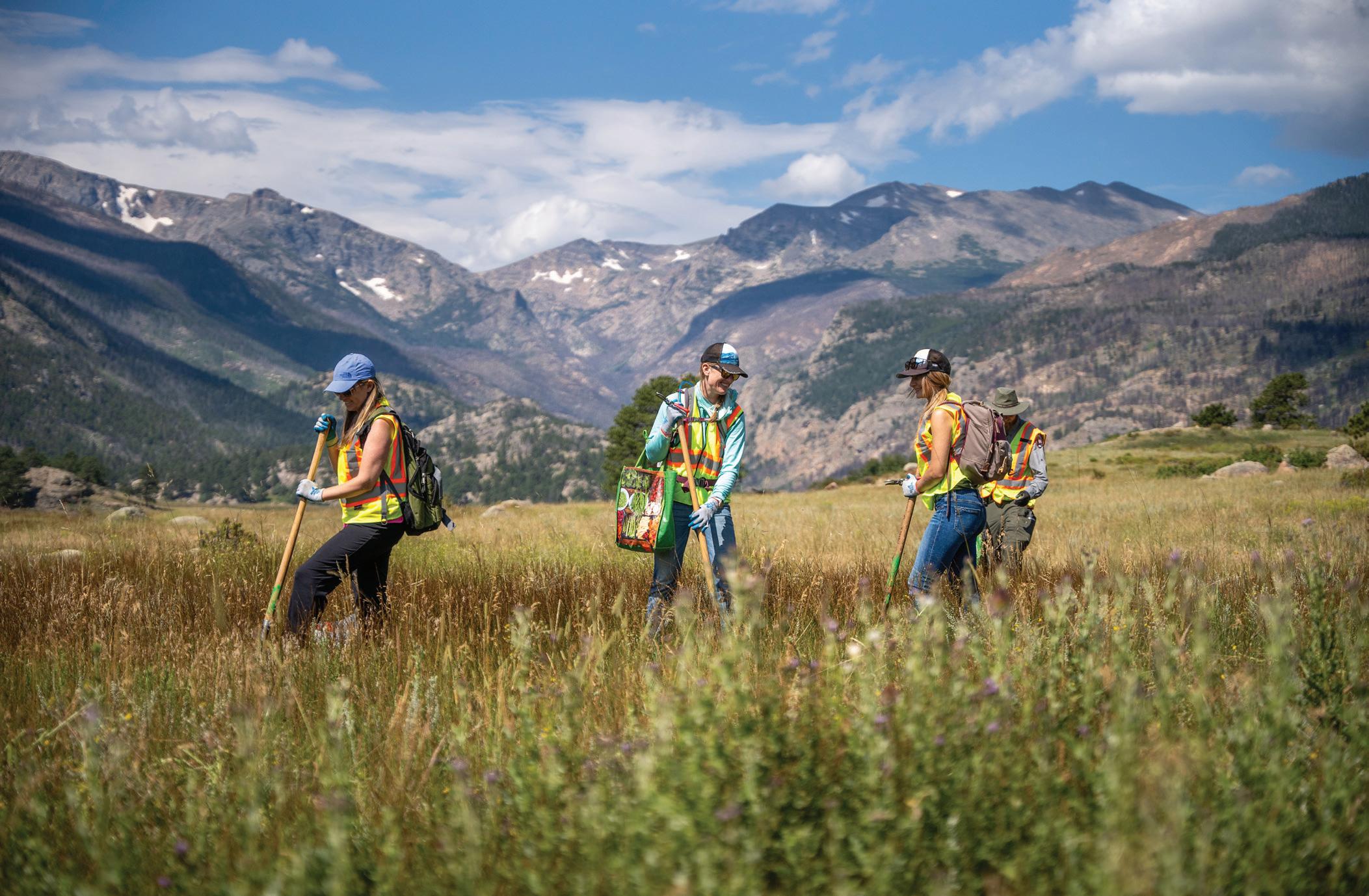
The Rocky Mountain Conservancy is the official nonprofit partner of Rocky Mountain National Park (RMNP) and provides millions of dollars annually in funding and in-kind support through flagship programs like the Conservation Corps, Field Institute, and the Next Generation Fund supporting extensive environmental education programs for school children.
The Conservancy supports the park with research, wildfire recovery, trail maintenance and construction, land acquisition for conservation and protection, and restoration of historic buildings. The Conservancy also funds equipment and training for Rocky’s Search & Rescue mission—the third busiest in the National Park Service with about 180 major SAR incidents annually
A few examples of ways the Conservancy’s donors and members supported the park in 2024 include:
• Maintained and improved 264 miles of trail, including burn-impacted areas.
• Assisted park trail crews with repairs to the Longs Peak Trail and installation of riprap pavers to strengthen the popular trail and protect fragile tundra.
• Cleared 143 acres of invasive plants to help our forests thrive.
• Continued the Indigenous Connections project in collaboration with Tribal Nations whose traditional homelands include RMNP
• Purchased horses, mules, and llamas to support Rocky’s backcountry operations.
• Supported the popular Junior Ranger program.
• Continued research on RMNP’s declining amphibian populations and funded the record-breaking release of over 14,000 boreal tadpoles.
Rocky Mountain Conservancy has committed
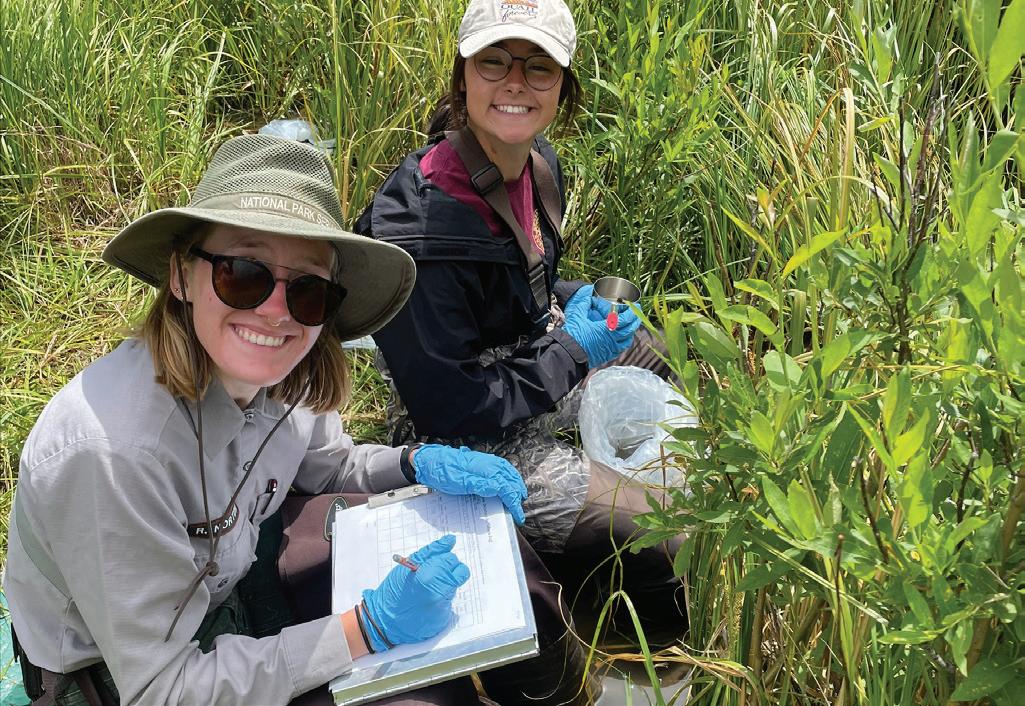

$6.2 million in support to Rocky in 2025. Can you help?
Visit RMConservancy.org to support your favorite RMNP program; pick up your RMNP specialty license plate; discuss an estate gift; or donate stock, artwork, or your unwanted vehicle. Give directly to the Conservancy’s Conservation Corps program. Rocky Mountain Conservancy has hosted its very own AmeriCorps Conservancy Corps program since 2003. This year, over 50 young adults will serve, learn, and live in Rocky and the surrounding Arapaho & Roosevelt National Forests. These crew members support trail construction and maintenance, habitat restoration, historic preservation, and visitoruse site improvements.
Over the course of their summer service, they earn a living allowance, gain valuable professional skills, learn about public land management, and develop a conservation ethic.
One of the Conservancy’s signature programs is its renowned Field Institute, where recognized subject matter experts lead you in field-based, hands-on learning experiences in Rocky Mountain National Park. A wide range of topics are available, including wildflowers, mammals, birds, cultural history, photography, painting, and botany. Visitors who believe in “collecting experiences, not things” can explore course offerings and register at RMConservancy.org/events.

Become a member and enjoy discounts on select Field Institute courses and our retail items. This year, we’re offering members who join at the $50+ level custom and comfy Rocky Mountain Conservancy socks.
Check out our Nature Stores
in and surrounding Rocky Mountain National Park or shop online at www. RMConservancy.org/shop. Source unique gifts for yourself and others while also putting your dollars to work for the park! Join us in making a difference for Rocky Mountain National Park, truly one of America’s best ideas!



By Daniel Webb for Estes Park Trail-Gazette
The Colorado State Forest Service released its annual forest health report, a deep dive into the condition of Colorado’s forests during another warm, dry year for the state.
Following a wet and cool in 2023, the shift back to near-record temperatures and below-average precipitation in Colorado last year put additional stress on trees that required several years of mild conditions to develop defenses against the attacks of forest pests. Insects like the bark beetle are building populations throughout forests in Northern Colorado and across the state, creating


a change in fuel dynamics for wildfires by leaving dead and dying trees in their wake.
“Trees in Colorado can’t catch a break as our climate




becomes warmer and dryer in Colorado,” said Matt McCombs, state forester and director of the CSFS. “This ongoing trend toward persistent drought and higher temperatures not only makes trees easier prey for insects, but it increases the risk of large and severe wildfires. Couple that with more people living in areas prone to burn and the state faces enormous challenges. The good news is we know Colorado is on the right path to address these challenges and foster forests and communities that are resilient to wildfire and forest pests.”
According to the report, insects continue to be the foremost health concern for our forests.
According to aerial survey data from the CSFS and U.S. Forest Service Rocky Mountain Region, the western spruce budworm remains the most widespread forest pest in Colorado. The mountain pine beetle is bolstering its forces, gradually increasing its population along the front range.
Kristy Burnette of the CSFS says that acres of trees killed by Douglas-fir beetle surpassed a level not seen in nearly a decade with the western balsam bark beetle
remains the deadliest forest pest in Colorado for the third year in a row.
In Northeast Colorado alone, the mountain pine beetle has reared its head again, putting together a formidable comeback across the Front Range after having devastated 80% of pine forests in Colorado from 1996-2014. Additionally, emerald ash borer continues its spread across the northern Front Range. This deadly, non-native insect has been reported in Fort Collins, Loveland, Lakewood and Centennial.
Fir trees in Northwest Colorado continue to succumb to western balsam bark beetle that works alongside fungi that cause root decay. Piñon Ips beetle is attacking piñon pine trees in Garfield, Mesa and Pitkin counties, while Douglas-fir beetle has heavily impacted Douglas-fir forests in those same counties along with Eagle County.
An aerial view of the greatest threats in each region of the state is available at the CSFS website, csfs.colostate.edu.

































































